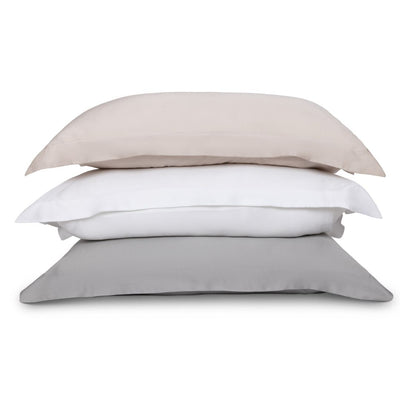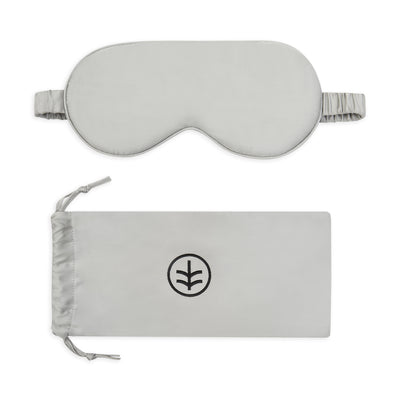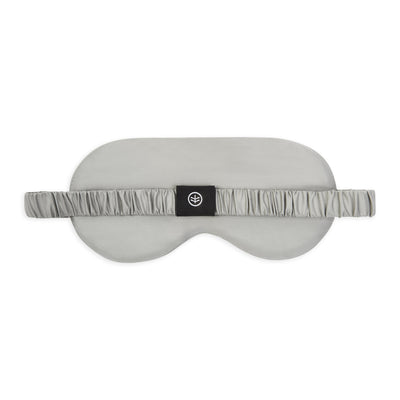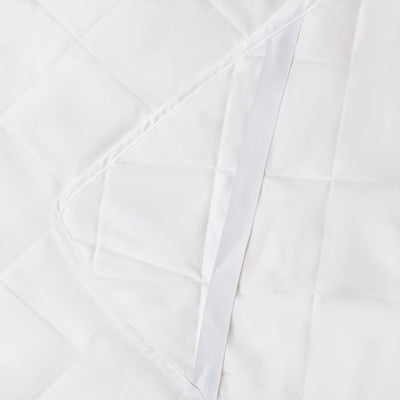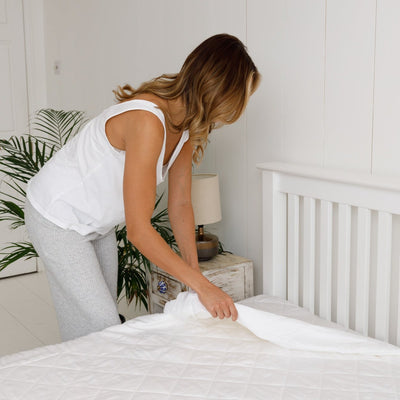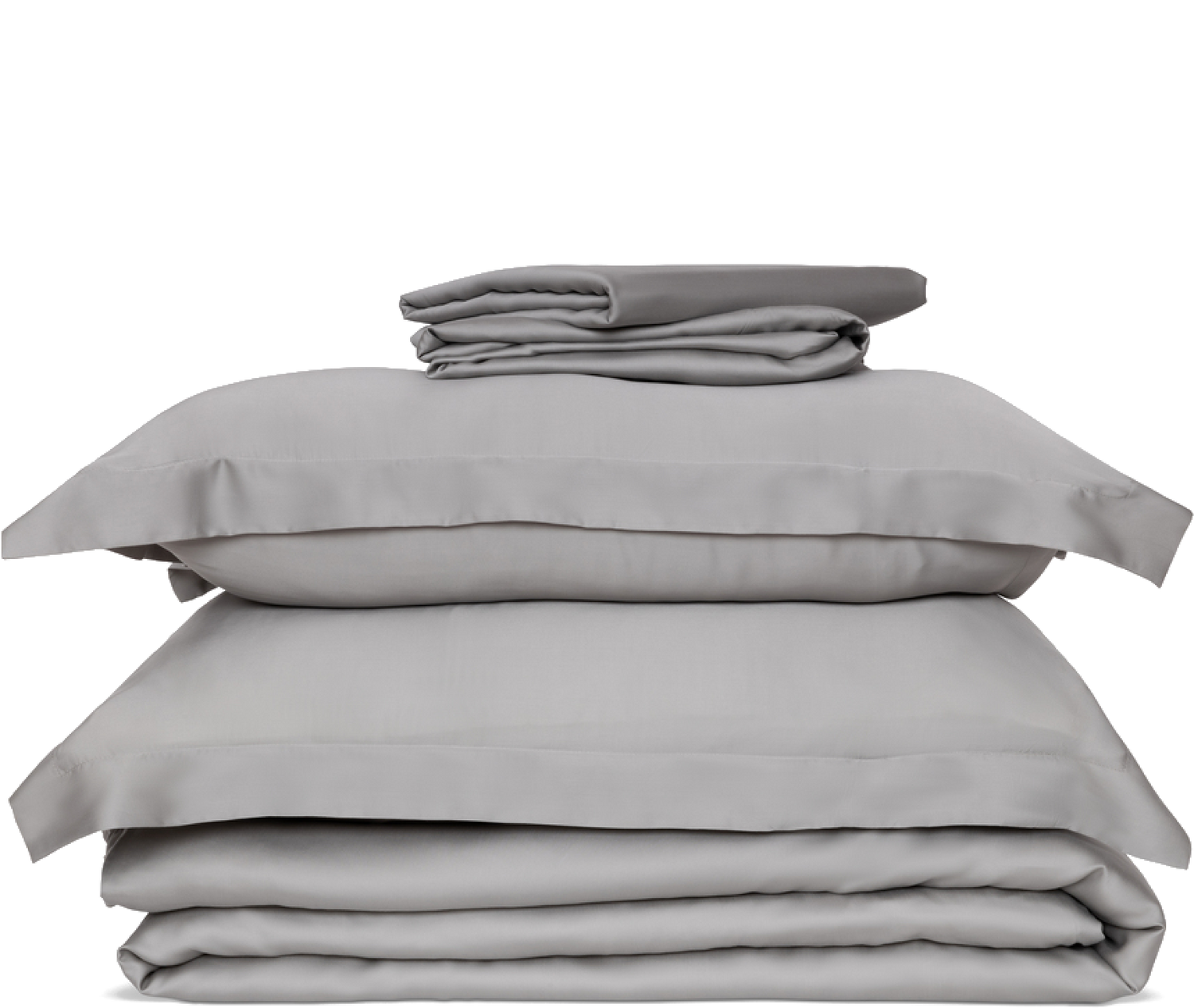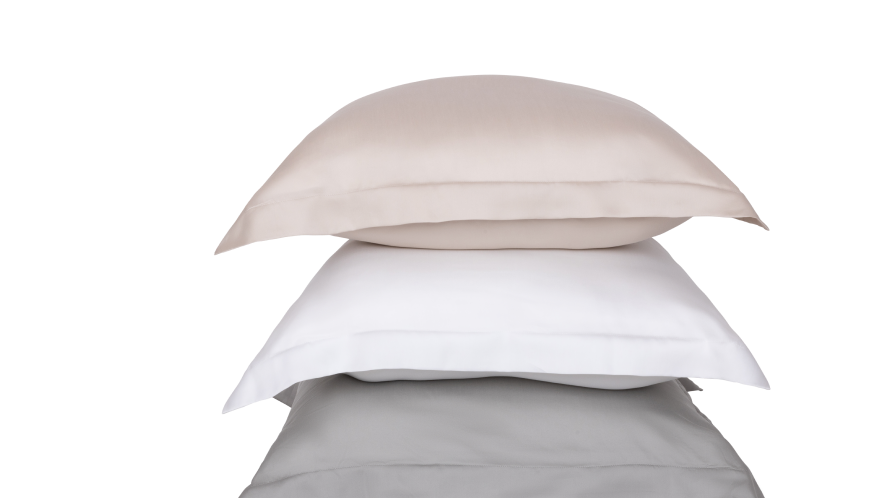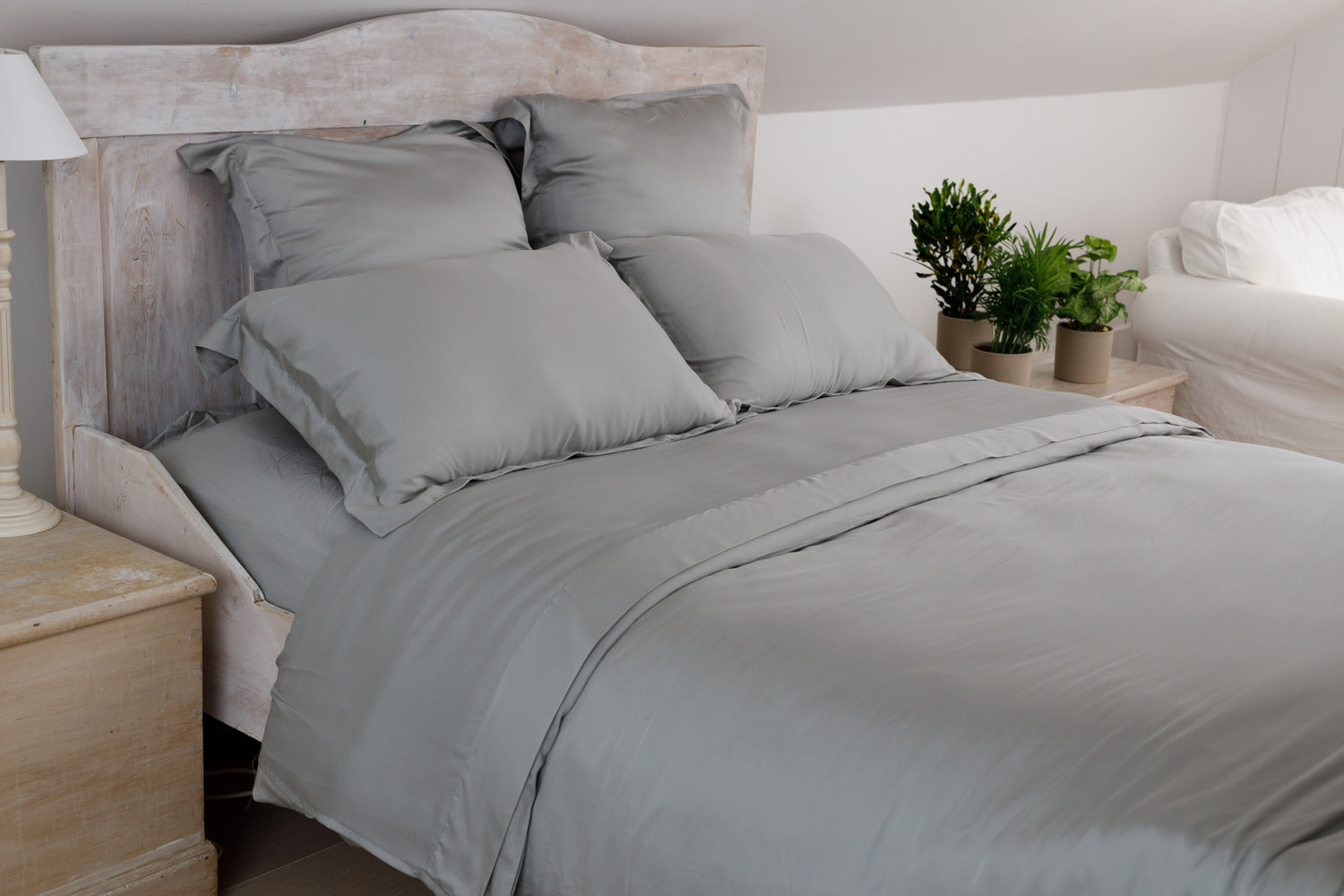NATURAL BEDDING EXPLAINED
Fabrics have been made and used by humans for thousands of years as clothing, bedding and functional tools. From wool to leather to linen, the components of fabrics were sourced from the surrounding natural environment.
Natural bedding is so named based on the source of the fabric that the bedding is made from. It describes any fabric that is woven with fibres sourced in the natural world. These fabrics cover a huge range in quality, sustainability and affordability.
So, what makes one natural fibre better than another and are there any new bedding fabric alternatives?
Natural Bedding: Key Questions & Information
- Uses of Natural Fabrics
- Natural Bedding Fabrics
- Is Natural Bedding Sustainable?
- Is Natural Bedding Ethical?
- Natural Bedding Properties
- Which Bedding is Right for You?
USES OF NATURAL FABRICS
Natural fibres never stopped being produced. However, with the advancement of both society and technology, new fabrics were created made from new, artificial materials. Clothing, bed sheets and home furnishings are increasingly made from plastic and other synthetic materials through long, multi-step processes.
The cheap, mass-produced artificial fabrics were made to supply the increasing demand on textile production. Now, synthetic materials are some of the widely produced textiles across the globe.
Social awareness of the environmental and human damage of the fashion industry is increasing and consumers are once again searching for a more natural, environmentally friendly source of their textiles.
However, along with the development of new fabrics, there was also the creation and implementation of new farming methods of natural fibres including toxic pesticides, and environmentally demanding irrigation.
Luckily, the continuing development in the textile industry has led to the production of more environmentally friendly fabrics and production methods.
NATURAL BEDDING FABRICS
Cotton
One of the most widely produced fabrics in the world and by far the most in-demand natural fabric. Cotton grows on cotton plants before being picked, spun and weaved into the popular fabric.
There are many different types of fabric ranging from cheap, short fibre that is grown in environmentally damaging conditions to expensive, organic cotton which has a softer feel and is grown in harmony with its environment.
Differences in cotton production begin with the variation of the plant that is being grown as there are many species of cotton that each yield different results.
Silk
Silk has always been considered not only a natural fabric but also a luxury fabric. It has an amazingly soft and smooth feel and is very expensive to buy.
Its expense is only partly due to its silky texture. Silk comes from an insect commonly known as a silk worm. When the insect hibernates, it builds a cocoon out of silk fibre. This is the fibre that is extracted and woven into silk fabric.
Because the fibre is dependent on the insect, it can be difficult to get a high yield which also contributes to the cost of silk.
Linen
Linen is made from flax seeds and is famously lightweight and airy. It is therefore a very popular choice for warmer climates as it keeps the body cool and dry without being sticky from sweat.
Flax naturally grows without the need for many pesticides, so some consider it to be naturally organic. However, the organic label comes with high standards and without the certification it can’t be known if flax is grown in the most sustainable way.
Wool
Wool has been used across the globe for thousands of years. It is a well-known product of the coats of sheep, but wool can also be sourced from goats, llamas, alpacas, rabbits and even camels.
It is typically warm, cosy and fluffy and is a popular choice for warmer clothing like jumpers, coats and socks. It has also often been used as bedding and can be knitted in a range of patterns shapes and dyed may colours.
There are also more expensive variations of wool such as cashmere, which is warmer, lighter, softer and considerably more expensive. Cashmere comes from a very specific species of goat.
NATURAL BEDDING FABRICS
It is presumed that expensive designer bedding products would be made using high-quality materials and fabrics. While many designer brands do use high quality materials such as silk or Egyptian cotton, the mere existence of a label does not guarantee it.
When shopping for designer bedding, it is important for consumers to not assume high quality and to instead look carefully at the labels. Unless the brand is explicitly marketing luxurious and high-quality materials used in the fabrics of their bedding, it is likely the fabric consists of lower grade cottons or synthetic material blends.
If a designer brand does guarantee the use of high-quality fabrics in their bedding, it is still impossible to know from the label information whether the bedding product has been produced in a sustainably farmed manner or whether it has been made by exploited garment manufacturers in sweatshops.
Alternatively, consumers can shake off the need for a designer label and instead shop based on the production methods, quality and sustainability of the fabric.

Shop our Natural eucalyptus Silk Pillowcases
IS NATURAL BEDDING SUSTAINABLE?
Since, they are made from natural fibres, it makes sense that natural fabrics would be sustainable. One great thing about natural fabrics is that because of the natural fibres, they are completely biodegradable. Unfortunately, farming practices and production methods are often much less environmentally friendly.
Some natural fabrics are more sustainable than others. Silk, for example, is considered to be one of the more sustainable options since it doesn’t need toxic pesticides or herbicides o grow. However, it does require specific temperatures for the optimum yield and maintaining the ideal temperature can be energy intensive, leaving a large carbon footprint.
Like silk, many natural fabrics are sustainable in some ways but aren’t perfect. The most sustainable natural fabric option is probably organic cotton while the least sustainable natural fabric would be regular cotton.
Standard cotton has been termed the world’s dirtiest crop, even worse than artificial fabrics made form plastic. It requires huge amounts of toxic pesticides than contaminate local water systems and damage human health. Additionally, it is incredibly water intensive and puts a huge strain on local water systems.
Organic cotton on the other hand, is the most sustainable choice of natural fabric as it doesn’t use toxic pesticides and is grown in ways to benefit the land and local ecosystems. Although, organic cotton does still require a lot of water.
To increase sustainability, it’s important for more natural fabrics to be grown and certified organic. The organic process is the key and organic linens, hemps and other natural fibres will become more sustainable.
Artificial materials are overall unsustainable and bad for the environment. They are mostly sourced from plastics in long, energy intensive processes. Additionally, plastics come from the finite source of crude oil which is non-replenishable.
Although not technically considered a natural fabric, one of the most sustainable fabric options is the semi-synthetic Tencel™. It is made from regenerated cellulose fibres from wood pulp. The trees sourced for the wood pulp are fast-growing and don’t need the application of toxic pesticides.
The process is also closed loop so any chemicals that any chemicals that are used, can be reused and aren’t introduced to the local environment.
IS NATURAL BEDDING ETHICAL?
Judging the ethicality of a fabric requires the consideration of a number of factors. Firstly, a huge workforce is required in the production of fabrics for each of the stages from farming to garment manufacture.
For a fabric to be considered ethical in this sense there would first need to be acceptable, safe working conditions and a fair rate of pay for the farmers of the natural fibre.
Unfortunately, this is not the case in the production of many natural fibres. Farmers often work long hours for minimal rates of pay. Some crops also require excessive use of toxic pesticides and herbicides which can be damaging to the health of farmers.
Only fabrics that have qualified for the Fairtrade label are guaranteed to be exempt from these practices.
The fashion and textile industries are also guilty of overworking and underpaying garment manufacturers. Fabric factories are mostly located in developing countries such as India or China, where workers may not have dignified or fair working conditions.
Another issue some may have with the production of natural fibres is the involvement if animals. In modern methods of obtaining silk from the silk worm, the silk work is steamed until dead in order to get long, unbroken silk strands.
Additionally, some practices in obtaining wool from sheep can be harmful to the animal. While shearing a sheep is not inherently harmful, the nature of demand means that sheep are often mistreated or sometimes killed for their wool.
It seems ironic that fabrics obtained from the natural world can have violent and harmful effects on the animals that provide them. These practices are seen by some as a necessary evil whereas others deem the production unethical.
NATURAL BEDDING PROPERTIES
Temperature Regulation
Some fabrics have the ability to wick moisture away from the body. This is great for clothing and bedding as it removes sweat and can keep skin cool and dry. It also means that, particularly with bedding, temperature is regulated throughout the night.
This property generally comes from the long fibres that are spun and weaved into the fabric. Some natural fabrics have long fibres, but it isn’t an inherent property. Standard cotton, for example, has short fibres and is therefore less able to wick moisture and is more likely to pill.
Fabrics don’t have to be natural in order to have temperature regulatory properties. Artificial fabrics in general are not good at wicking moisture. However, some semi-synthetic fabrics like Tencel™ are ideal for year-round temperature regulation.
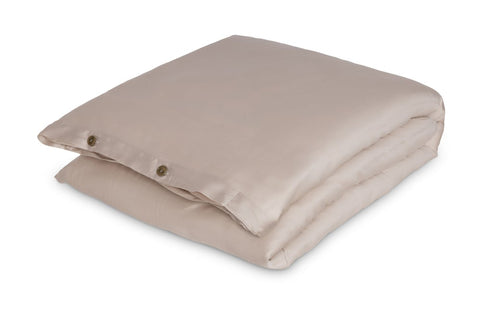
Shop our natural Tencel duvets
Durability
The durability of a fabric once again is not determined buy whether it is natural or not. However, most natural fabrics are more durable than artificial fabrics.
Some of the strongest and longest lasting fabrics are natural such as organic cotton, Egyptian cotton and silk.
Durability is obviously a great feature for bedding as it isn’t as easily damaged and can be replaced less often
WHICH BEDDING IS RIGHT FOR YOU?
The lure of natural bedding comes from an assumed link with ethical and sustainable ideals and the idea that is better the self and the environment.
Unfortunately, this is not always the case and instead of blindly trusting a natural fibre product, it is worth checking for organic certifications and Fairtrade labels. Additionally, due to the toxins used or shortcuts in production, natural fabrics aren’t even necessarily the best option for the skin, hygiene or individual health.
Alternatively, some newer, semi-synthetic fabrics such as Tencel are finding a balance between natural fibres, high quality fabrics and sustainable practices.
Interested in a natural bedding set? Check out Ethical Bedding's range of luxurious organic bedding here.




